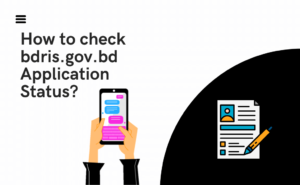The Distance Matrix API is a web service that uses an algorithm to calculate the distance and travel time between two or more points on a map. It is designed to provide accurate results regardless of the mode of transportation, whether it’s driving, walking, or cycling. The API takes into account various factors such as traffic, road closures, and other variables that could affect the travel time and distance.
To use the Distance Matrix API, developers must first obtain an API key from Google. They can then send requests to the API using HTTP requests. The API returns a JSON or XML response, which includes the distance, travel time, and other relevant information.
The Distance Matrix API can be integrated into a variety of applications, including ride-sharing services, logistics management systems, and travel planning apps. With the help of the API, developers can provide their users with accurate information about the distance and travel time between two or more locations.

The Distance Matrix API is a tool that has revolutionized the way people understand distances and routes. With the help of this API, developers can build applications that calculate the distance between two points, as well as the time it takes to travel between them. In this article, we will explore the key features and functionality of the distance matrix API, how it works, the benefits of integrating it into your application, and some best practices for utilizing it.
Key Features and Functionality of the Distance Matrix API
The Distance Matrix API offers a wide range of features and functionality that make it an indispensable tool for developers. One of its key features is the ability to calculate the distance and travel time between multiple points. This is particularly useful for logistics management systems, where it is necessary to determine the most efficient route for multiple deliveries.
Another important feature of the Distance Matrix API is the ability to provide real-time traffic information. This allows developers to calculate the travel time based on current traffic conditions, rather than just the distance between two points. This is particularly useful for ride-sharing services, where it is important to provide accurate estimates of arrival time.
The Distance Matrix API also offers support for multiple modes of transportation, including driving, walking, and cycling. This makes it a versatile tool that can be used in a variety of applications. In addition, the API offers support for multiple languages, which makes it accessible to a global audience.
Also Read: Exploring the Facebook API: A Comprehensive Overview
Benefits of Integrating the Distance Matrix API in Your Application
Integrating the Distance Matrix API into your application offers a number of benefits. One of the most significant benefits is the ability to provide accurate information about distances and travel times. This can help users make more informed decisions about their travel plans, and can also help logistics management systems optimize their routes.
Another benefit of integrating the Distance Matrix API is the ability to provide real-time traffic information. This can help users avoid traffic congestion and arrive at their destination more quickly. It can also help ride-sharing services provide more accurate estimates of arrival time, which can improve the user experience.
Integrating the Distance Matrix API into your application can also help you save time and resources. Rather than building your own distance and route calculator, you can use the API to quickly and easily obtain accurate information. This can free up your development team to focus on other aspects of your application.
Best Practices for Utilizing the Distance Matrix API
To get the most out of the Distance Matrix API, there are some best practices that developers should follow. One of the most important is to use caching to reduce the number of API requests. Caching can help reduce the load on the API server and improve the performance of your application.
Another best practice is to use the API in conjunction with other Google Maps APIs. For example, developers can use the Places API to obtain information about businesses and landmarks near a specific location. They can then use the Distance Matrix API to calculate the distance and travel time between those locations.
Developers should also be mindful of the API usage limits. Google imposes limits on the number of requests that can be made to the Distance Matrix API in a given period of time. Exceeding these limits can result in additional charges or even suspension of the API key.
Conclusion
The Distance Matrix API is a powerful tool that can help developers build applications that provide accurate information about distances and travel times. By integrating the API into their applications, developers can provide their users with a better experience, save time and resources, and improve the efficiency of their logistics management systems. By following best practices and being mindful of API usage limits, developers can get the most out of the Distance Matrix API.
Author Profile
-
Raj Singh is a highly experienced digital marketer, SEO consultant, and content writer with over 8 years of experience in the industry.
As a content writer, Raj has a talent for crafting engaging and informative content that resonates with audiences. He has a keen eye for detail and a deep understanding of SEO best practices.
Latest entries
 ApplicationFebruary 20, 2024Maha Food Hall Ticket 2024 Download Now- with Exam Dates
ApplicationFebruary 20, 2024Maha Food Hall Ticket 2024 Download Now- with Exam Dates ApplicationFebruary 18, 2024tsbie m services hall ticket download Inter 1st, 2nd year [2024]
ApplicationFebruary 18, 2024tsbie m services hall ticket download Inter 1st, 2nd year [2024] AppsFebruary 18, 2024Register on Nivesh Mitra App and Download Certificate/Noc
AppsFebruary 18, 2024Register on Nivesh Mitra App and Download Certificate/Noc AppsFebruary 17, 2024Cozovmoni App Download for Android (2024)-Cozovmoni.com
AppsFebruary 17, 2024Cozovmoni App Download for Android (2024)-Cozovmoni.com





